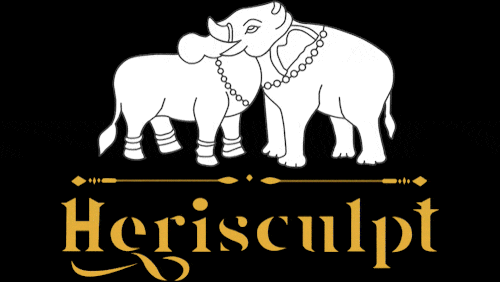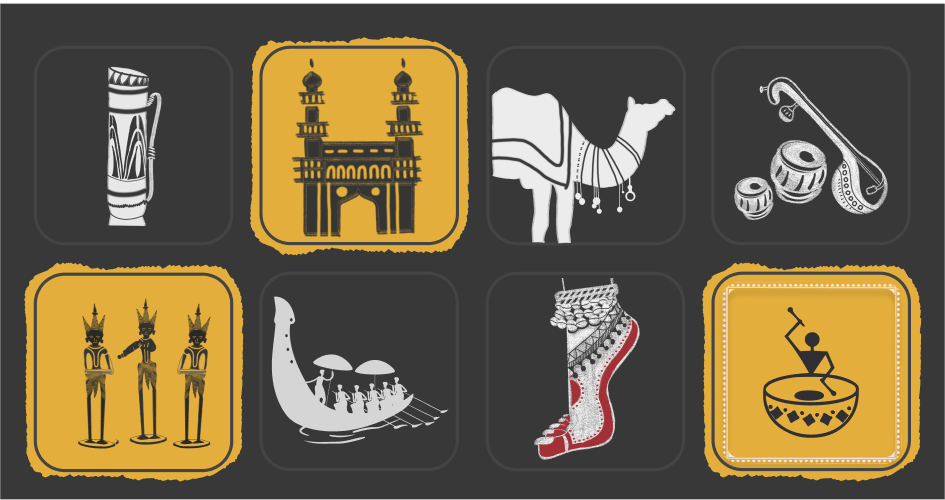Lord Murugan: The Multifaceted Hindu God of War,Victory and Wisdom
Lord Murugan: The Multifaceted Hindu God of War,Victory and Wisdom
Lord Murugan, also known as Kartikeya, Skanda, Subramanya, and various other names, is a prominent deity in Hindu mythology. Revered as the god of war and victory, he is particularly venerated in South India, Sri Lanka, and among the Tamil diaspora worldwide. Murugan's mythology is rich and multifaceted, embodying themes of valour, devotion, and divine leadership.
The birth of Lord Murugan is a fascinating tale filled with divine interventions and celestial events. According to Hindu mythology, Murugan is the son of Lord Shiva and Goddess Parvati. His birth was orchestrated to defeat the demon Tarakasura, who could only be killed by a son of Shiva. The legends narrate that Murugan was conceived from six sparks that emanated from Shiva's third eye. These sparks were carried by Agni, the god of fire, and dropped into the holy river Ganga. From there, they were deposited into a lake called Saravana, where they transformed into six divine children. These six children were raised by the six Krittika stars (hence the name Kartikeya), and were eventually united into a single form by Parvati, resulting in the six-headed deity, Murugan.
Murugan is known by many names, each reflecting a different aspect of his persona and mythology:
Kartikeya: Derived from the six Krittika stars who nursed him.
Skanda: Meaning "the one who has spilled over," referring to his miraculous birth.
Subramanya: Meaning "dear to Brahma," highlighting his wisdom and noble qualities.
Senthil: Signifying his association with the red hills.
Saravana: Referring to the lake where he was born.
Shanmukha: Meaning "six-faced," denoting his unique form.
spiritual solace and cultural pride.
The Palani Murugan Idol :
Palani Malai is believed to be one of the six sacred abodes (Arupadai Veedu) of Lord Murugan. According to Hindu mythology, the hill is where Lord Murugan withdrew in the form of a recluse after an altercation with his parents, Lord Shiva and Goddess Parvati. Thus, it holds significance as a dwelling place of the deity, emphasising the importance of inner contemplation and spiritual solitude. Devotees visit the hill to emulate the deity's virtues and seek spiritual enlightenment.
Pilgrims undertake the journey to seek the deity's blessings, fulfil vows, and offer prayers for various purposes, including health, prosperity, and protection.The arduous journey to the hilltop, often involving climbing steep paths and steps, is seen as a means of purifying the soul and fostering spiritual growth. Devotees view the physical exertion as a test of their devotion and commitment to Lord Murugan.
The idol of Lord Murugan at the Palani temple is one of the most unique and significant representations of the deity. Known as Dhandayuthapani Swamy, this form of Murugan is both distinctive and deeply symbolic, reflecting the spiritual essence and rich traditions of Tamil Hinduism.
The Palani Murugan idol is crafted from a special amalgam known as Navapashanam, a combination of nine poisonous herbs and minerals. This unique material is believed to have significant medicinal properties and is credited to the legendary Tamil Siddhar, Bogar. Bogar, a revered sage and alchemist, created this idol with the intention of embodying both spiritual and healing qualities. The idol is often depicted in a standing posture, with one leg slightly forward, suggesting readiness and action. This pose reflects the dynamic nature of Murugan as a warrior deity, always prepared to protect and lead his devotees.
Visit Us to Browse Our products
Iconography and Symbolism:
Youthful Ascetic:
In the Palani temple, Murugan is depicted as a youthful ascetic. This form is known as "Bala Dhandayuthapani" (Young Lord with the Staff). Unlike other depictions of Murugan, which often show him with his consorts Valli and Deivanai, the Palani Murugan idol is depicted alone, signifying his renunciation and detachment from worldly pleasures.
Features of the Idol
The idol of Palani Murugan is typically shown with a shaved head, symbolising asceticism. In some representations, he might have a simple headgear, often a crown or a headband.His face radiates serenity and youthful vigour, embodying both wisdom and innocence. The expression is calm and composed, reflecting deep meditation and spiritual focus
The upper body of the idol is usually bare, symbolising purity and simplicity. The deity is adorned with sacred ash (vibhuti) and sandalwood paste (chandan), which are applied on his forehead and body, signifying his divine and ascetic nature. The idol is often depicted wearing a simple loincloth or a dhoti, enhancing the ascetic representation. The attire is minimal, highlighting the renunciation aspect of the deity.
Ornaments: Although Murugan is depicted as an ascetic, he is also adorned with certain ornaments that signify his divine status. These include:
- Crown (Kireetam): Represents his royal lineage as the son of Lord Shiva and Goddess Parvati, and his authority as the commander-in-chief of the divine army. Intricately designed with jewels and divine symbols.
- Ear Ornaments (Kundalas): Symbolize his receptiveness to devotees' prayers. Large and ornate, often embellished with precious gems.
- Necklaces and Chains (Haaram): Signify divine grace, prosperity, and his role as a bestower of blessings. Multiple layers of gold necklaces studded with precious stones.
- Chest Ornaments (Channavira): Symbolize valor and protection for his devotees. Intricately designed and gem-studded.
- Armlets (Bajuband): Represent strength, power, and readiness for battle. Golden bands adorned with jewels.
- Bracelets and Wristlets (Kankanas): Reflect his dynamic nature and readiness to take action. Crafted from gold and embellished with jewels.
- Waist Belt (Katisutra): Signifies strength and support for devotees. Golden belt with or without gemstones.
- Ankle Bells (Noopura): Symbolize his divine dance and cosmic rhythm. Golden anklets with small bells.
- Peacock Feather Ornaments: Represent his vehicle, the peacock, symbolizing beauty, grace, and victory over ego.
Sacred Symbols:
- Spear (Vel): His divine weapon, symbolizing knowledge, power, and the destroyer of evil. Often depicted as a long, sharp spear.
- Peacock: His vehicle (vahana), symbolizing beauty, wisdom, and victory. Associated with temple iconography and sculptures.
Palani Murugan |Standing Murugan(Subramanya)
The Golden Kavacham:
On special occasions and during festivals, the idol is adorned with a golden kavacham (armour). This elaborate armour is intricately designed and enhances the divine aura of the deity. The kavacham is adorned with precious stones and reflects the opulence and grandeur associated with Murugan.
Explore our collections in idol, Figurines, Artefacts, Monuments
History of Palani Murugan:
Palani Murugan, also known as Dhandayuthapani Swamy, is one of the most revered deities in Tamil Nadu, India. The temple dedicated to him in Palani, situated in the Dindigul district, is one of the six abodes of Lord Murugan, known as Arupadai Veedu. The history of Palani Murugan is rich with legends, spiritual significance, and architectural grandeur, making it a major pilgrimage site for devotees.
One of the most popular legends associated with Palani Murugan is the divine contest between Lord Murugan and his brother, Lord Ganesha. According to the story, Sage Narada once visited Kailash and presented a magical fruit, the jñāna-pazham (fruit of wisdom), to Lord Shiva and Goddess Parvati. They decided to give it to one of their sons, Murugan or Ganesha, but faced the dilemma of choosing between them.
To resolve this, they set a challenge: whoever circled the world three times and returned first would receive the fruit. Murugan swiftly set off on his peacock, while Ganesha, realising his physical limitations, circled his parents, considering them to be his world. Impressed by Ganesha's wisdom, Shiva and Parvati awarded him the fruit.
Palani Murugan (Subramanya)
Feeling dejected and misunderstood, Murugan renounced his divine abode and settled on the hill of Palani. It is believed that he chose this place to perform penance and meditate, symbolising his detachment and pursuit of enlightenment. The name "Palani" is derived from the Tamil words "Pazham Nee," meaning "You are the fruit," referring to the realisation Murugan had about the true nature of wisdom and enlightenment.
The Palani Murugan Temple's origins can be traced back to ancient Tamil literature and inscriptions. References to the temple and the deity can be found in works dating back to the Sangam period (circa 300 BCE to 300 CE). The temple has been mentioned in the writings of various Tamil saints and poets, indicating its longstanding significance.
Explore our collections in idol, Figurines, Artefacts, Monuments
The temple has seen patronage from various dynasties, including the Cheras, Pandyas, Cholas, and later, the Nayaks. Each dynasty contributed to the temple’s construction, expansion, and renovation. The Pandyas, in particular, are credited with building significant parts of the temple complex, including the main sanctum. The Nayak rulers of Madurai further embellished the temple with intricate carvings and sculptures, adding to its architectural grandeur.
The temple complex includes several mandapams (halls), gopurams (towers), and shrines dedicated to various deities. The ascent to the temple can be made via a series of stone steps or a winch system, offering a panoramic view of the surrounding hills and plains. The temple also features a gold-plated gopuram, an addition by the Nayak kings, which adds to its splendour.
Divine feats of Lord Murugan
- Defeat of Surapadman: One of the most celebrated legends of Lord Murugan is his battle against the demon Surapadman. The demon, having received a boon of near invincibility, terrorised the heavens and the earth. The gods, unable to defeat him, sought the help of Lord Murugan. Riding his magnificent peacock, Murugan led a divine army to confront Surapadman. After a fierce battle, Murugan split the demon into two halves, which transformed into a peacock and a rooster, symbols that became his own vehicle and emblem.
- Commander-in-Chief of the Devas: Murugan was appointed the commander-in-chief of the gods' army by Lord Shiva. This position of supreme military leadership underscores his strategic acumen and martial prowess. His leadership brought numerous victories for the gods against various formidable asuras (demons).
- Marriage to Valli and Deivayanai: Murugan's marriages to Valli and Deivayanai are significant episodes in his mythology. Valli, a tribal princess, represents devotion and love, while Deivayanai, the daughter of Indra, symbolises duty and righteousness. These marriages signify the harmonious union of different aspects of life and the blending of divine and earthly elements.
- Guru to Saint Arunagirinathar: Murugan is revered as the divine teacher who imparted wisdom to the Tamil poet-saint Arunagirinathar. The saint, who initially led a life of dissipation, was transformed by Murugan's grace and went on to compose the "Tiruppugazh," a collection of hymns praising the deity. This act highlights Murugan's role as a spiritual guide.
- Manifestation as Swaminatha Swami: In a famous episode, Lord Murugan imparted the meaning of the sacred syllable "OM" to his father, Lord Shiva, thus earning the title "Swaminatha Swami" (Teacher of Shiva). This story emphasizes his supreme knowledge and his role as a source of spiritual enlightenment.
Festivals and Rituals:
Thai Poosam:
One of the major festivals celebrated at the Palani Murugan Temple is Thai Poosam, held in the Tamil month of Thai (January-February). This festival marks the occasion when Goddess Parvati gave Murugan his powerful weapon, the Vel (spear), to vanquish the demon Surapadman. Devotees from all over the world participate in the festival, often undertaking a pilgrimage to Palani on foot, carrying kavadis (ornate structures) as a form of penance and devotion.
Panguni Uthiram:
Another significant festival is Panguni Uthiram, celebrated in the Tamil month of Panguni (March-April). This festival commemorates the divine marriage of Murugan to his consorts, Valli and Deivanai. The event is marked by elaborate processions, rituals, and cultural performances, drawing large crowds of devotees.


